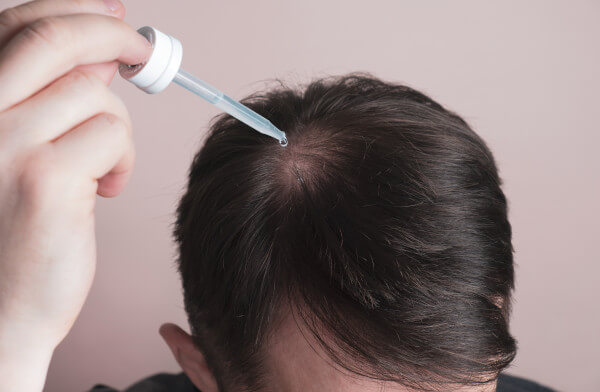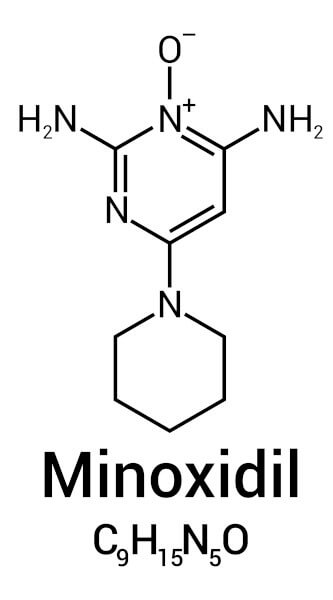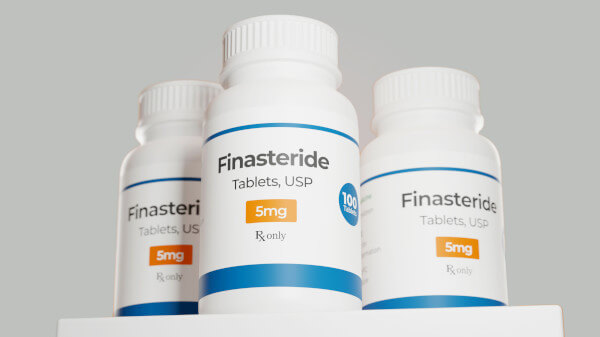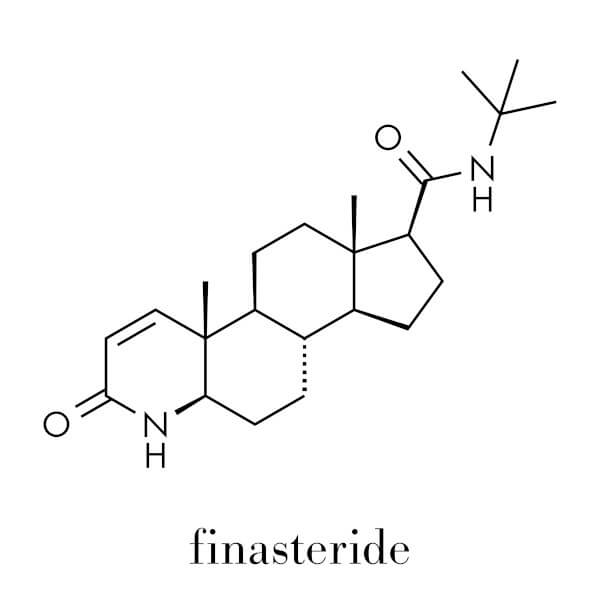
Hair loss can take a significant toll on self-confidence and quality of life, prompting many individuals to seek effective solutions to combat thinning hair or balding. Two popular medications commonly prescribed for hair loss treatment are Rogaine (minoxidil) and Propecia (finasteride).
Both are successful products for millions of men and women around the world to help maintain your hair with minimal to no side effects.
While these medications can be effective in slowing down hair loss and promoting some hair regrowth, as with most medications, they also come with potential side effects and limitations for some people. In this comprehensive guide, we’ll delve into the side effects of Rogaine and Propecia and explore why hair transplantation could offer a viable alternative for those seeking a permanent solution to hair loss.
Understanding Rogaine (Minoxidil)
 Rogaine, also known as minoxidil, is a topical medication approved by the FDA for the treatment of male and female pattern hair loss (androgenetic alopecia). It works by stimulating hair follicles, prolonging the growth phase of the hair cycle, and increasing blood flow to the scalp. Rogaine is available over the counter in various forms, including foam and liquid solutions, and is typically applied directly to the scalp twice daily. Oral minoxidil is also available through prescription and often gives better results. It is currently an off-label (non-FDA approved) medication for hair loss.
Rogaine, also known as minoxidil, is a topical medication approved by the FDA for the treatment of male and female pattern hair loss (androgenetic alopecia). It works by stimulating hair follicles, prolonging the growth phase of the hair cycle, and increasing blood flow to the scalp. Rogaine is available over the counter in various forms, including foam and liquid solutions, and is typically applied directly to the scalp twice daily. Oral minoxidil is also available through prescription and often gives better results. It is currently an off-label (non-FDA approved) medication for hair loss.
Common Side Effects of Rogaine
While Rogaine is generally well-tolerated by most individuals, it can cause side effects in some users. Common side effects of Rogaine may include:
1. Scalp Irritation: Some users may experience mild scalp irritation, itching, or redness after applying Rogaine. This is typically temporary and resolves with continued use or by adjusting the application frequency or formulation. The liquid version of Rogaine contains more alcohol and propylene glycol than the foam and both are potential irritants. If you are sensitive to these ingredients, then often the foam will be a better option.
2. Increased Shedding: In the initial stages of treatment, some individuals may experience a temporary increase in hair shedding before new hair growth occurs. This shedding is often referred to as “shedding phase” and is considered a normal part of the hair growth cycle and is often mild. “Patients should be instructed that a shedding phase is a normal part of the process when starting Rogaine and can be seen in the initial 6 months, says Dr. Christine Shaver, a boardcertified dermatologist and hair transplant surgeon at Bernstein Medical – Center for Hair Restoration. “If unaware of this shed phase, then many people mistakenly stop their Rogaine since they feel it is not working.”
3. Unwanted Hair Growth: In rare cases, Rogaine may stimulate the thickening of fine, vellus hairs in areas where it’s applied. While this is generally not a cause for concern, it may be undesirable for some users.
4. Systemic Side Effects: Although rare, some individuals may experience systemic side effects such as dizziness, rapid heartbeat, or unwanted hair growth on other parts of the body. If these symptoms occur, it’s essential to discontinue use and consult a healthcare professional.
It is important to note that minoxidil for women is a viable option, while finasteride generally is not. It’s important to consult with a board-certified dermatologist before starting any treatment plan to make sure you’re using the right product and dosage for you.
Understanding Propecia (Finasteride)
 Propecia, also known as finasteride, is an oral medication approved by the FDA for the treatment of male pattern hair loss. It works by inhibiting the enzyme 5-alpha reductase type 2, which converts testosterone into dihydrotestosterone (DHT), a hormone that contributes to hair loss through the process of miniaturization. By reducing DHT levels in the scalp, Propecia helps slow down hair thinning and promote hair regrowth in men with androgenetic alopecia.
Propecia, also known as finasteride, is an oral medication approved by the FDA for the treatment of male pattern hair loss. It works by inhibiting the enzyme 5-alpha reductase type 2, which converts testosterone into dihydrotestosterone (DHT), a hormone that contributes to hair loss through the process of miniaturization. By reducing DHT levels in the scalp, Propecia helps slow down hair thinning and promote hair regrowth in men with androgenetic alopecia.
Common Side Effects of Propecia While Propecia is generally well-tolerated, it can cause side effects in some users. Common side effects of Propecia may include:
While Propecia is generally well-tolerated, it can cause side effects in some users. Common side effects of Propecia may include:
1. Sexual Dysfunction: One of the most well-known side effects of Propecia is sexual dysfunction, including decreased libido, erectile dysfunction, and ejaculatory disorders. These side effects may occur in a small percentage of users but is often reversible when the medication is discontinued. Rarely, a condition known as Post-Finasteride Syndrome (PFS) can occur, which is the persistence of a side effect despite stopping finasteride. This appears to be reported at a rate of about 1 in 5,000 patients according to the literature.
2. Gynecomastia: In rare cases (around 0.4%), Propecia may cause breast enlargement (gynecomastia) or breast tenderness in male users. This side effect typically resolves upon discontinuation of the medication. If excess tissue persists despite stopping, then liposuction can be considered.
3. Depression and Anxiety: Some individuals may experience mood changes, depression, or anxiety while taking Propecia. It’s essential to monitor your mental health and seek support if you experience any concerning symptoms.
4. Other Side Effects: Other less common side effects of Propecia may include rash, itching, swelling of the lips and face, and testicular pain. If you experience any unusual symptoms while taking Propecia, it’s crucial to consult your healthcare provider.
Conclusion
While medications like Rogaine and Propecia can be effective in slowing down hair loss and promoting hair regrowth for some individuals, they do come with potential side effects and limitations. For those seeking a more permanent solution to hair loss, hair transplantation offers a viable alternative with long-lasting, natural-looking results.
By consulting with a board-certified hair restoration specialist like those at Bernstein Medical Center for Hair Restoration, individuals can explore their options and make informed decisions about the best course of treatment for their unique needs and goals.
It is important that patients who experience hair loss have a consultation with a board-certified dermatologist to make sure that the diagnosis is correct and the treatment is appropriate.
The experts at Bernstein Medical – Center for Hair Restoration are happy to discuss what solutions are best for you.
To book a consultation online, click HERE
Call us at: 212-826-2400
Visit our website www.bernsteinmedical.com/ for more information






